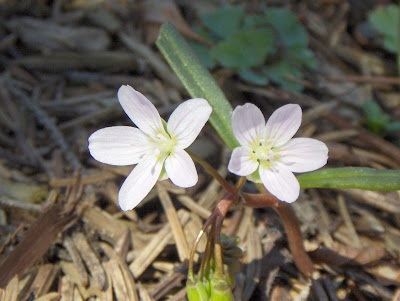
The case is a mass of hardened foam containing from 50 to 400 eggs, that the female secreted on twigs in late summer or autumn.

Purchased cases can be kept in a jar in the refrigerator until you want to release them in the spring. Attach the egg case to a stem a few feet off the ground.

I can have fun observing this case for signs of a hatch while I work on cleaning up the flower bed this weekend. Actually, the case doesn't change in appearance once the young hatch, and it may take up to 8 weeks, but I'll be around and looking for these interesting "pet bugs."



















